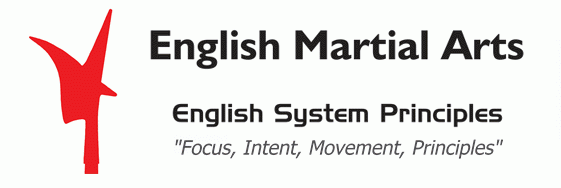
~ English Martial Arts, English System Principles ~
Company of Maisters - History
The earliest known references to the Company of Maisters of the Science of Defence come to us from the 16th century. The Company operated along similar lines to the trade guilds with which it was contemporaneous and, like the trade guilds, was responsible for such things as quality control, pricing, discipline/punishment, examinations, etc. In effect, the training of martial arts students was the equivalent of serving a trade apprenticeship. The Company of Maisters was an affiliation of martial arts instructors (maisters of defence) who ran their own academies which were known to the English as Scholes of Fence. In 1540 king Henry VIII issued Letters Patent to the Company the effect of which was to recognise their group as an official and legally constituted company or corporation. Aylward suggests that the Company of Maisters or its forerunner was in existence in very much earlier times than the 16th century. This is entirely feasible given that scholes of fence are mentioned in legislation as early as the 12th century (circa 1180).
In 1997, as part of his ongoing plan to re-introduce traditional English fighting systems to modern martial artists, Ancient Maister Terry Brown legally reformed the Company of Maisters for the purpose of researching traditional English fighting systems and sharing that knowledge with the public.
... Quoted from the modern Company of Maisters website ...
From Wikipedia ... Company of Maisters
" The Company of Maisters of the Science of Defence was an organisation formed in England during the reign of Henry VIII to regulate the teaching of martial arts. It served to prevent unlicenced instructors from operating, both as a form of quality assurance and as a monopoly to protect the livelihoods of its members. It also regulated the conduct of members to one another, both instructor and student.
Like the guilds it resembled, the company certified its members with varying ranks, depending on their level of skill and degree of permission to teach. Beginning students took the title Scholar and were required to hold the rank for no less than seven years before progressing to a higher rank. With proper determination and accumulation of skill, an individual moved to the second rank, Free Scholar. This rank marked noted advancement and skill, and like the previous position, had to be held for at least seven years before further progression. The next rank, Provost, provided the individual with apprenticeship to an instructor with whom they worked closely so as to improve their teaching skills and further their martial abilities. The Provost was not by any means a free teacher, remaining under the guidance and financial constraint, in the form of dues, of his superior. A truly gifted individual may have been raised to the title of Maister working as an independent instructor. The Company of Maisters of the Science of Defence was governed by four senior Maisters.
It never achieved guild status and eventually lost any influence with the passing of James I's anti-monopoly laws.
There were some attempts in the early 20th century to reform the guild, first in 1903, under the title "The London Académie d’Armes", and again in 1931 as "The British Federation of Fencing Masters". All this was interrupted by the Second World War. In 1949 an Ancient Guild of Fencing Masters was again refounded as The British Academy of Fencing. The inspiration for this venture came from the late Charles de Beaumont and it was implemented by Professor Roger Crosnier, Professor Leon Paul and Mr. J.D. Aylward. The Academy’s first President was Professor Leon Bertrand. The British Academy of Fencing (B.A.F.) is a founder member of the Academie d’Armes Internationale – the international federation of fencing academies. "
... Full article at Wikipedia ...